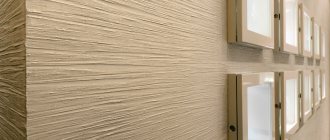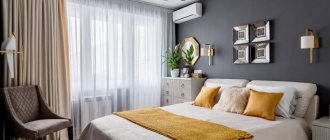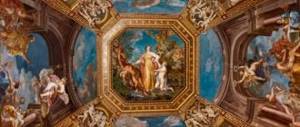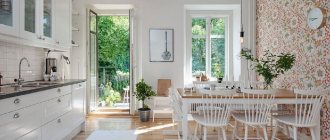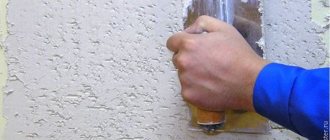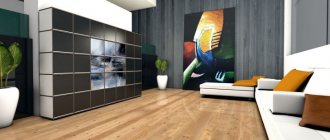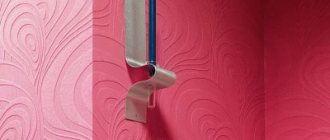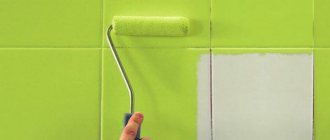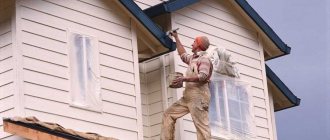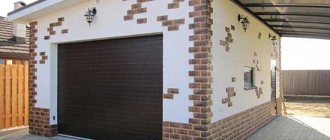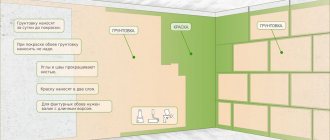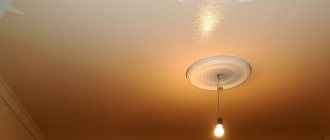Usually, people planning a renovation face many questions. And one of the main ones: wallpaper or painting - which is better?
It is difficult to give a definite answer to this. As a rule, before you finally decide, you need to find out all the specifics of the interior. And only after this will it be possible to say which option is optimal, and the advantages of one or another method will become most obvious.
Paint or wallpaper: choosing the best
To decide whether to wallpaper or paint the walls, which would be better in a particular situation, the owner of the room must think through some points in advance. The following nuances need to be taken into account:
- How much money from the family budget will be allocated for finishing;
- Will a designer be involved in creating the design?
- They will carry out the work with their own hands, or turn to professionals for services;
- The service life of the coating that is desirable to obtain;
- What is the base of the walls in the room, what interior elements will be present on the surface.
Everyone decides for themselves what is best for them: wallpaper or painting the walls in their apartment. But some nuances of the capabilities and features of the room dictate what to prefer.
Everyone decides for themselves what is best for them: wallpaper or painting the walls in their apartment.
Safety of finishing material
Before you start decorating the walls in the interior, you should make sure that the chosen coating is safe and will not cause harm to health. When considering wallpaper, you should take into account the base material and the composition with which the pattern was applied. The most common types of wallpaper for walls are:
- paper - made from cellulose composition, which is completely safe for humans;
- textile - manufacturers can add synthetic substances to their composition that increase the strength of the finished fabric. Their quantity does not exceed permissible standards, so this finishing material is safe;
- non-woven - if water-based paints were used to apply the design, then these wallpapers are not harmful to health (there should be a label on the packaging about the dyes used);
- vinyl - unscrupulous manufacturers may use harmful volatile substances in their production, which, with prolonged contact, negatively affect well-being. Therefore, when choosing vinyl wallpaper, you must definitely study their label to see if the manufacturer has the appropriate certificates of quality and product safety.
Wall paint can also be dangerous. Finishing materials containing ammonia and drying oil should be avoided. They have a pronounced, pungent odor, causing headaches and nausea. You can paint the walls in your apartment instead of wallpaper using the following safe paints:
- alkyd;
- latex.
Pros and cons of wallpaper
There is a wide variety of wallpaper. With their help, you can get not only different images, but also the texture of the coating. This makes it possible to choose canvases to suit any interior style. To choose an option, you need to understand the types of wallpaper.
You can choose canvases to suit any interior style.
Paper
The most budget-friendly type, it’s easy to choose a pattern for the interior due to the variety of options. However, such finishing will not last long; it is used only in rooms with a dry microclimate. Suitable for people who often like to renew their coverage.
The most budget-friendly type, it’s easy to choose a pattern for the interior due to the variety of options.
Non-woven
They have been in demand lately; they produce meter rolls, which requires less time to stick the canvases on the wall. The adhesive solution is applied to the wall itself, this simplifies the process.
The adhesive solution is applied to the wall itself, this simplifies the process.
Vinyl
Vinyl ones are great for the kitchen; they retain moisture, protecting the base from biological formations. The range of color solutions is varied.
Vinyl ones are great for the kitchen; they retain moisture, protecting the base from biological formations.
Fiberglass
Few owners of new buildings or other residential premises choose it because of the unusual coating. The canvases have many positive qualities: they are non-flammable, vapor-permeable, can withstand moisture, can be painted, and can be obtained with a textured coating.
Few owners of new buildings or other residential premises choose it because of the unusual coating.
Benefits of wallpaper
Wallpaper or wall paint, which is better is easier to decide if you understand the pros and cons of each. Wallpaper material has several important positive aspects:
- Gluing does not require the preparation of a perfectly leveled surface, especially for thick canvases;
- The products are safe for human health;
- You can easily choose the right look for any style of room;
- The vapor permeability of the coating creates a favorable indoor microclimate.
You can easily choose the right look for any style of room.
Flaws
Wallpaper is safe and can be used in children's rooms, but you need to take into account that it will be almost impossible to remove stains or other manifestations of a child's creativity. Even if washable linens were used. And this is definitely a minus. If cats and dogs live in the house, they can tear off such finishing.
If cats and dogs live in the house, they can tear off such finishing.
Painting: advantages and disadvantages
For particularly creative people who need walls of a certain (and often unusual) color, using paint as wall decoration is an excellent solution. To give the surface exactly the shade that a person needs, you can mix several colors in certain proportions, which you cannot do with wallpaper.
This method provides the performer with greater creative freedom.
Color mixing table
Having previously developed an individual concept for surface design, he can apply a wide variety of designs and other images depending on his aesthetic needs. When working with wallpaper, you will have to start from the pattern and color that was applied by the manufacturer.
But personal tastes can change over time, causing a person to want to update the style of their living space. In this sense, the paint coating is quite suitable for various creative “modernizations”. For example, you can completely change the color background with a new paint job, you can apply new artistic details to the old background, you can revive a particular section of the wall by gluing fragments of wallpaper onto it.
It should be borne in mind that painted walls will retain their good appearance for at least 8-10 years. And all this is due to the fact that painted walls are quite easy to clean with an ordinary rag.
The main disadvantage of the painting method is that, unlike the wallpaper method, the worker will have to prepare the working surface of the wall very carefully and for quite a long time. Preparatory operations for leveling surfaces, as a rule, include plastering, puttying, and applying a primer.
Of course, such work requires a fairly experienced craftsman with special skills. If an amateur does all this, then very soon he will have to face serious problems in the form of cracks and peeling dried paint.
Paint: pros and cons
Paint or wallpaper is a dilemma solved by comparing the pros and cons of each type. Therefore, the types of paints and varnishes for interior work will be described below.
Water-based preparations
They are characterized by quick drying and ease of application. There are subtypes that have a relief texture that can cover up minor imperfections in the base. Exposure to ultraviolet rays causes color fading.
They are characterized by quick drying and ease of application.
Water-dispersed
A coating that is resistant to water, mechanical stress and breathable is obtained. Suitable for rooms with high humidity. The product is produced in two colors - white, black; dyes are used to obtain the required shade. If the room is cold, the layer will begin to deform.
A coating that is resistant to water, mechanical stress and breathable is obtained.
Acrylic
The film-like coating is durable and elastic. Moisture-resistant properties and resistance to ultraviolet radiation make the composition popular. But the price is expensive.
The film-like coating is durable and elastic.
Latex
The layer will repel moisture and will be able to cover some surface defects. The drying process does not take much time and is easy to apply. Can be used for textured and smooth substrates.
The layer will repel moisture and will be able to cover some surface defects.
Silicone
The degree of coverage is the highest compared to other types, so they can cover up flaws. Moisture resistant, washable.
The degree of coverage is the highest compared to other types, so they can cover up flaws.
Benefits of paints
The preparatory stage requires priming and the application of antiseptic agents, which helps to eliminate biological formations in the future. Paints are easy to update and correct flaws. It is possible to wash the layer; pets are passive to such finishing.
Paints are easy to update and correct flaws.
Flaws
Carrying out such repairs requires special skills; professionals charge a lot of money for such a service. Strong mechanical shocks are dangerous for the coating; the paint may peel off. Decorative paints with a textured structure are expensive.
Carrying out such repairs requires special skills; professionals charge a lot of money for such a service.
Comparison of wallpaper and painting
In order to objectively make a decision between these two finishing materials, a number of criteria are studied to determine the possibility of using each for certain working conditions.
In order to objectively make a decision between these two finishing materials, a number of criteria are studied.
What is more expensive
A comparative analysis of the cost of materials showed that paints are cheaper compared to wallpaper. We are talking only about the means themselves, without taking into account the costs of other tools and materials required for the process.
A comparative analysis of the cost of materials showed that paints are cheaper compared to wallpaper.
Cost of work
If you need to involve specialists in repairs, then the complexity of preparing the surface for painting is taken into account; here you need to get a perfectly leveled base. Therefore, services will cost more, and painting itself is more expensive compared to gluing canvases.
Services will cost more, and painting itself is more expensive compared to gluing canvases.
Complexities of technology
The degree of complexity of the technology for gluing and painting a single-color coating is similar. But gluing wallpaper with patterns is somewhat more difficult, which means it will be more difficult to glue the wallpaper.
Gluing wallpaper with patterns is somewhat more difficult; accordingly, gluing the wallpaper will be more difficult.
Wall surface requirements
As mentioned earlier, paint can be applied to a leveled surface; it will highlight any flaws. Wallpaper can cover some of the defects.
The paint can be applied to a leveled surface; it will highlight any imperfections.
Difficulty of removal
Removing old material is difficult in both cases. But the elimination of the painted layer is carried out with special means, and requires more time and effort. In this case, the colors lose.
Elimination of the painted layer is carried out with special means and requires more time and effort.
Fire resistance
Silicate paints and glass wallpaper are considered non-flammable. Other types of finishing materials are equivalent.
Silicate paints and glass wallpaper are considered non-flammable.
Resistant to fading
Any finishing materials can withstand exposure to ultraviolet radiation if they are of high quality. Budget types of wallpaper and paints are not resistant to such effects.
Any finishing materials can withstand exposure to ultraviolet radiation if they are of high quality.
Resistance to mechanical stress
Wallpaper fabrics are easy to tear and scratch. And the paint layer is not easily subjected to mechanical stress. The colors win here.
The paint layer is not easily subjected to mechanical stress.
Life time
Vinyl and glass wallpaper are durable wallpapers; paint and varnish materials all last a long time.
Vinyl and glass wallpaper are durable wallpapers.
Waterproof
The resistance to water of coloring agents is higher; all types can withstand a similar load. Wallpaper does not have this property; only vinyl wallpaper is glued in a room with high humidity.
The resistance to water of coloring agents is higher; all types can withstand a similar load.
Design
The design is chosen from the individual preferences of the owners, and depends on the taste of the owner. For this reason, comparison is not possible.
The design is chosen from the individual preferences of the owners, and depends on the taste of the owner.
Ecological cleanliness
For interior work, safe materials of both types are created. However, wallpaper based on vinyl, under the influence of a number of unforeseen factors, can release toxic substances.
For interior work, safe materials of both types are created.
Thermal and sound insulation
Wallpaper material can slightly reduce the sound transmission of walls. Coloring compounds do not have this characteristic.
Wallpaper material can slightly reduce the sound transmission of walls.
Which is more practical?
The paper type of wallpaper is not practical. Vinyl and non-woven ones attract dirt less, but washing them is difficult. The painted layer can be washed, although it tends to attract dirt. In terms of practicality, paints are considered the best.
In terms of practicality, paints are considered the best.
What is better: wallpaper technology or wall painting?
When choosing one or another finishing method, it is necessary to take into account all possible nuances, and not least the level of skill of the contractor, his financial capabilities and the planned speed of the repair.
So, if there is clearly not enough experience in carrying out repair and finishing work, then perhaps it is better to stick with wallpaper. Using this method as a basis, you can save yourself the unnecessary hassle of preparing perfectly flat surfaces.
Additionally, decorating rooms with wallpaper is often a cheaper option. The fact is that, as practice shows, the cost of the paint itself is often much lower than the total cost of materials for the preliminary preparation of substrates for painting.
If the customer is a fairly wealthy person, then you can choose painting. Walls covered with exquisite, carefully selected and flawlessly combined colors look very stylish and aristocratic. If the customer does not intend to change his interior for several years, then his optimal choice is paint.
It is worth noting that often the choice of the type of finishing depends on the choice of one or another “folklore” style or “historical era” in which the interior of the room is made. So, knowledgeable people advise using wallpaper if the customer plans to decorate his premises in a Victorian style, in a colorful Baroque style, in French or Japanese motifs. As for painting, according to experts, it is best suited for Moroccan and Mediterranean interiors, as well as for rooms in rationalistic colors. But for interior “classics” and “modern” style, both wallpaper and paint are good.
What and in which rooms is better to prefer?
When choosing, take into account the features of the room. For bathrooms and kitchens, it is preferable to paint the walls. The same applies to hallways. For the bedroom and children's room it would be optimal to hang wallpaper. In other rooms, the choice is made based on budgetary possibilities, interior design and other criteria.
For the bedroom and children's room it would be optimal to hang wallpaper.
Paint or wallpaper - which is more aesthetically pleasing?
This parameter is relative, because everyone has different tastes. If we talk about bedrooms, then wallpaper is preferable; it creates more comfort. An example of obtaining a Scandinavian style is painting the surface in light colors. There is no point in giving advice here; the choice is up to the owner.
An example of obtaining a Scandinavian style is painting the surface in light colors.
Pros and cons of wallpaper
Wallpaper is easy to glue, you can carry out repairs yourself. No careful surface preparation is required. They are environmentally friendly, with the exception of the vinyl type. Modern canvases can create a textured coating on the surface, expanding the range of styles.
Both wallpaper and paint can be applied to drywall, but the surface must be prepared to prevent it from being destroyed. Disadvantages include difficulty in washing and weakness to mechanical stress.
Wallpaper is easy to glue, you can carry out repairs yourself.
Benefits of wallpaper
- Variety of shades and patterns. This allows for flights of fancy. Manufacturers tried to introduce digital printing technology into wallpaper production, which made the textures realistic and bright. For rooms with low ceilings, wallpaper with straight vertical stripes will make the room appear taller.
- Strength. Despite the fact that the paper tears in your hands, securely glued to the wall it resists accidental mechanical impacts well;
- Hiding defects. Ideal for uneven walls and surfaces with cracks. The presence of a dense pattern distracts attention from minor flaws. The eye does not notice existing irregularities, the illusion of a perfectly flat plane is created;
- Visual effect. With the help of wallpaper you can achieve originality of the interior, its depth and comfort. There are several hundred unique design options for apartments and houses in any style.
Which is cheaper: painting the walls or hanging wallpaper?
It is impossible to give a definite answer as to whether it is cheaper to paint the walls or hang wallpaper. The variety of funds creates a wide range of pricing policies. There are expensive types among wallpapers and paints. If we talk about the services of professionals, then gluing wallpaper will cost less.
The variety of funds creates a wide range of pricing policies.
The article addressed the question of whether it is better to paint the walls or hang wallpaper. The choice is made taking into account the characteristics of the premises, budgetary possibilities and the requests of the owners. Each type has its pros and cons.
